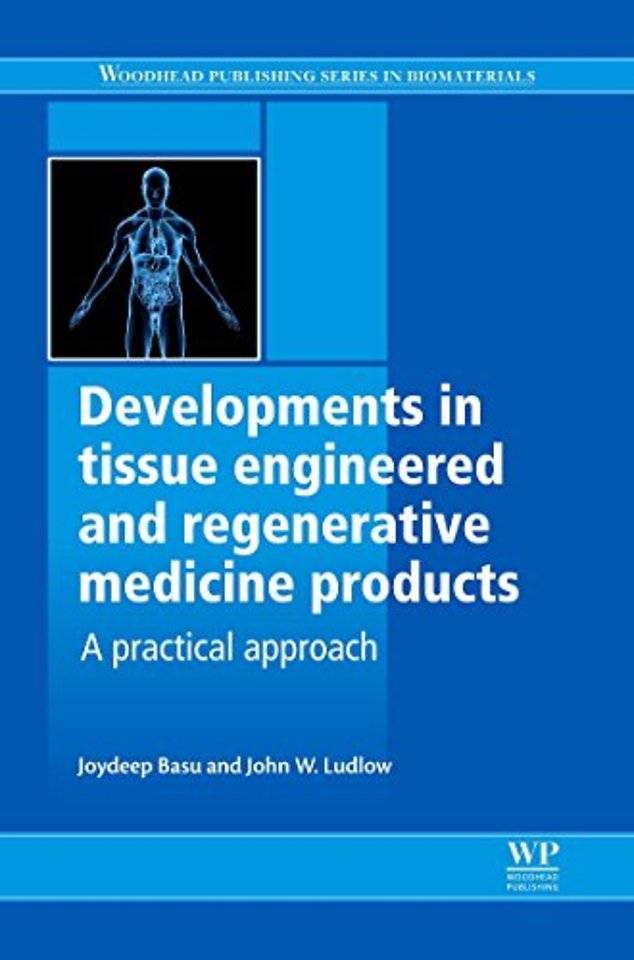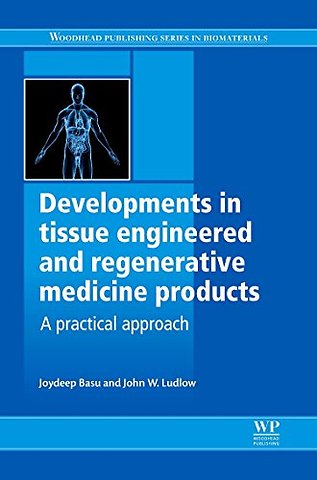<p>List of figures, tables and boxes</p> <p>About the authors</p> <p>Woodhead Publishing Series in Biomaterials</p> <p>Preface</p> <p>Acknowledgements</p> <p>Chapter 1: Overview of tissue engineering/regenerative medicine</p> <p>1.1 Introduction</p> <p>1.2 Cells</p> <p>1.3 Biomaterials</p> <p>1.4 Therapeutic product delivery</p> <p>Chapter 2: Cells</p> <p>Abstract</p> <p>2.1 Introduction</p> <p>2.2 Mechanism of action of cell-based therapeutics</p> <p>2.3 Other stem cell-based therapeutics currently under development</p> <p>2.4 Development of genome modification technologies: gene-based cell therapies</p> <p>2.5 Committed cell types: ideal candidates for TE/RM product development</p> <p>2.6 Summary: key features favoring commercial development of cellular ABIs</p> <p>Chapter 3: Biomaterials for TE/RM products</p> <p>Abstract</p> <p>3.1 Introduction</p> <p>3.2 The ECM: comparator for biomaterials</p> <p>3.3 Decell/recell: the ultimate biomaterial platform?</p> <p>3.4 Selection of biomaterials for tissue engineering: illustrative example – kidney</p> <p>3.5 Biomaterials candidates for renal tissue engineering</p> <p>3.6 Selection of biomaterials for tubular organs: bladder, esophagus and small intestine</p> <p>Chapter 4: Neo-Bladder: a foundational technology platform for tubular organ regeneration</p> <p>Abstract</p> <p>4.1 The need for urinary neo-organs</p> <p>4.2 TE/RM methodologies for bladder replacement and augmentation</p> <p>4.3 Demonstration of Neo-Bladder formation in large animals</p> <p>4.4 Can neo-bladder constructs be made from cells sourced from diseased patients?</p> <p>4.5 Neo-bladder replacement in human pediatric patients – first clinical trials of a neo-organ</p> <p>4.6 Making the product: cell sourcing</p> <p>4.7 Definition of the cell source used for seeding neo-bladders: adipose</p> <p>4.8 Other approaches to tissue engineering neo-bladders</p> <p>4.9 Key results from development of the Neo-Bladder: factors facilitating commercial viability of an organ regeneration platform</p> <p>Chapter 5: Neo-Urinary Conduitâ„¢</p> <p>Abstract</p> <p>5.1 Introduction</p> <p>5.2 Assembly of the NUC</p> <p>5.3 Preclinical evaluation of the NUC</p> <p>5.4 Assembly of an NUC cell/scaffold composite</p> <p>5.5 GLP preclinical analysis of de novo NUC formation in a porcine cystectomy model</p> <p>5.6 Alternate cell sourcing of SMC for seeding of the NUC</p> <p>5.7 Clinical trials of the NUC</p> <p>5.8 Regeneration of muco-cutaneous region at the skin/conduit junction</p> <p>5.9 Speculations for the future</p> <p>Chapter 6: Tissue engineering of non-bladder tubular organs</p> <p>Abstract</p> <p>6.1 Introduction</p> <p>6.2 Vasculature</p> <p>6.3 Lung</p> <p>6.4 Gastrointestinal tract</p> <p>6.5 Genito-urinary system</p> <p>Chapter 7: Tissue engineering of solid organs</p> <p>Abstract</p> <p>7.1 Introduction</p> <p>7.2 Kidney</p> <p>7.3 Heart</p> <p>7.4 Liver</p> <p>7.5 Pancreas</p> <p>7.6 Spleen</p> <p>7.7 Central nervous system</p> <p>7.8 Summary</p> <p>Chapter 8: Regulatory and quality control</p> <p>Abstract</p> <p>8.1 Good manufacturing practice</p> <p>8.2 Good tissue practices</p> <p>8.3 GMP-compliant laboratories and manufacturing facilities</p> <p>8.4 Standard operating procedures and batch records</p> <p>8.5 Personnel training and documentation</p> <p>8.6 Best practices and the need for harmonization</p> <p>8.7 Investigational New Drug application</p> <p>Chapter 9: Pre-clinical and clinical evaluation of TE/RM products</p> <p>Abstract</p> <p>9.1 Regulation of TE/RM products</p> <p>9.2 Preclinical studies</p> <p>9.3 Clinical protocol development</p> <p>9.4 Clinical trial</p> <p>9.5 Clinical trial site monitoring</p> <p>9.6 Contract research organization</p> <p>Chapter 10: Manufacturing</p> <p>Abstract</p> <p>10.1 Facility considerations</p> <p>10.2 Clean rooms</p> <p>10.3 Environmental monitoring</p> <p>10.4 Process controls</p> <p>10.5 Raw material qualification</p> <p>10.6 Manufacturing process</p> <p>Chapter 11: Intellectual property</p> <p>Abstract</p> <p>11.1 Definition of intellectual property</p> <p>11.2 Landscape assessment</p> <p>11.3 Operational documentation</p> <p>11.4 Disclosure</p> <p>11.5 Filing</p> <p>11.6 Freedom to operate</p> <p>11.7 Trade secrets</p> <p>11.8 Trademarking</p> <p>11.9 The Leahy–Smith America Invents Act</p> <p>Index</p>

